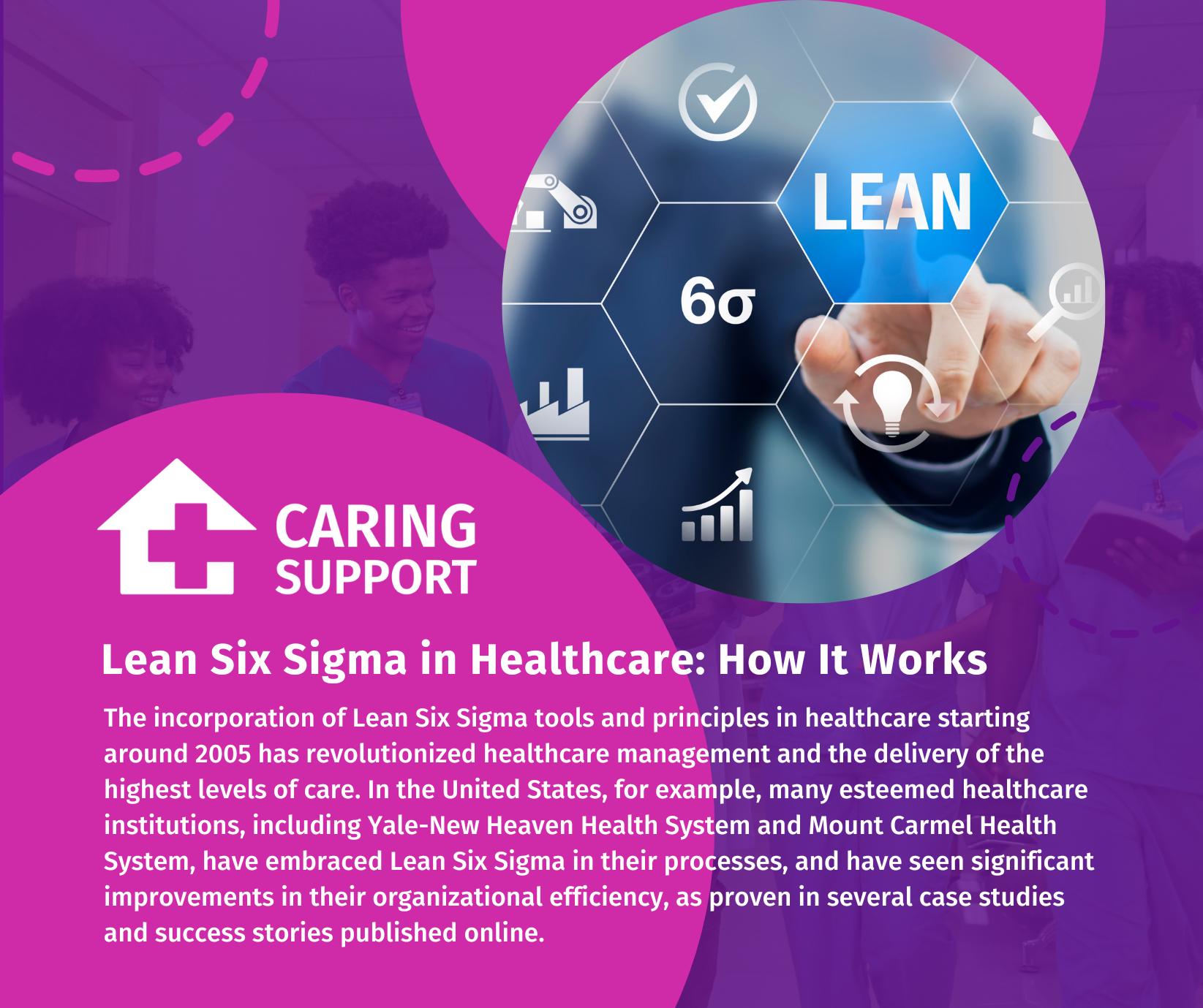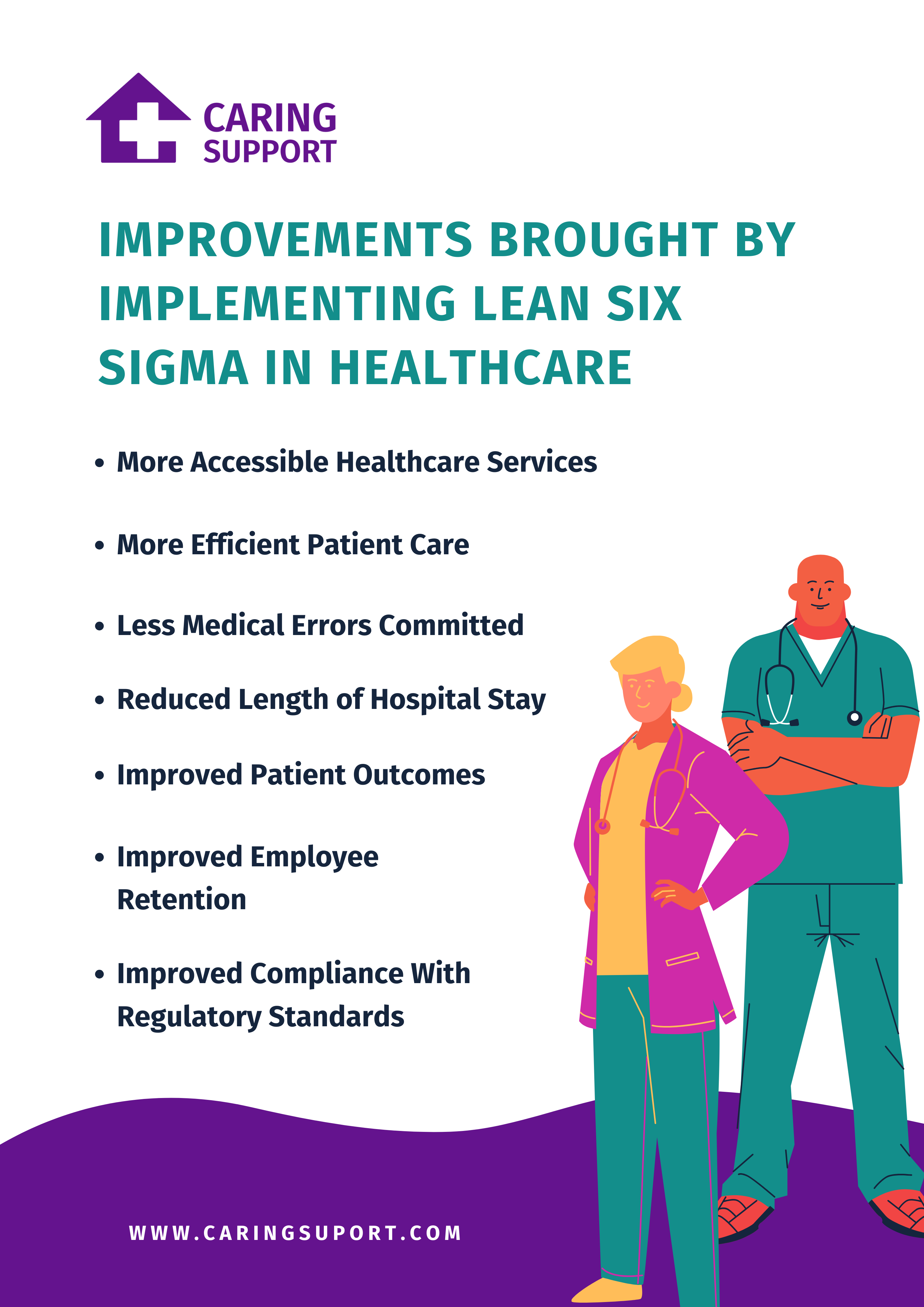The incorporation of Lean Six Sigma tools and principles in healthcare starting around 2005 has revolutionized healthcare management and the delivery of the highest levels of care. In the United States, for example, many esteemed healthcare institutions, including Yale-New Heaven Health System and Mount Carmel Health System, have embraced Lean Six Sigma in their processes, and have seen significant improvements in their organizational efficiency, as proven in several case studies and success stories published online.

For instance, Mount Carmel Health System has experienced a lot of benefits in this initiative. These include being able to gain $3.1 million financial return and a projected rapid growth in succeeding financial returns, despite having financial difficulties prior to implementation of Lean Six Sigma, and improved employee and patient satisfaction.
In this article, we will explore the concept of Lean Six Sigma in healthcare, discuss its implementation through the DMAIC approach, highlight factors that can affect its successful implementation, and delve into the benefits it brings to the healthcare industry.
Lean Six Sigma is a methodology that combines Lean Manufacturing principles and Six Sigma techniques to improve efficiency and quality in healthcare. It focuses on reducing waste, errors, and variation in processes, ultimately leading to better patient outcomes and cost savings in healthcare organizations. It combines two methodologies:
Lean revolves around maximizing efficiency, minimizing waste, and promoting a culture of continuous improvement to achieve operational excellence and deliver exceptional value to patients. Waste can take various forms in healthcare, such as waiting times, unnecessary movement of staff or patients, overproduction of documents or inventory, and inefficient use of resources. Lean principles help healthcare organizations streamline processes and improve patient flow, resulting in enhanced quality of care and reduced costs.
Six Sigma aims to reduce process variation and defects by applying statistical tools and methodologies. In healthcare, defects can lead to medical errors, patient harm, and increased costs. By using Six Sigma techniques, healthcare organizations can analyze data, identify root causes of problems, and implement evidence-based solutions to improve patient outcomes and operational performance.
The DMAIC (Define, Measure, Analyze, Improve, Control) approach is a structured framework used as a roadmap that helps in successfully implementing Lean methodology in project management, including in healthcare settings. Let's explore each phase:
In this phase, the project scope and goals are clearly defined. The team identifies the problem or opportunity for improvement, defines the project boundaries, and establishes a project charter. The project charter outlines the objectives, stakeholders, resources, and timeline for the project.
The measure phase focuses on gathering data to understand the current state of the process. Key performance indicators (KPIs) are identified, and data is collected to establish a baseline. This data-driven approach helps quantify the problem and provides a benchmark for improvement.
In the analyze phase, the team uses statistical tools and techniques to analyze the data collected. They identify root causes of problems, explore process variation, and perform root cause analysis. This phase helps the team gain insights into the underlying issues and facilitates the development of targeted solutions.
The improve phase aims to develop and implement solutions to address the identified root causes. The team brainstorms potential solutions, evaluates their feasibility, and selects the most effective ones. Pilot testing is often conducted to validate the solutions before full implementation. This phase focuses on making sustainable changes to the process.
The control phase focuses on implementing and sustaining the improvements made during the previous phases. Control plans are developed to monitor the performance of the process and ensure that the improvements are maintained. Key metrics are tracked, and regular reviews are conducted to identify any deviations and take corrective actions.
Implementing Lean Six Sigma in healthcare requires a comprehensive understanding of the factors that can influence its success. Let's explore some key factors:
A supportive and open-minded management team is crucial for the successful implementation of Lean Six Sigma. Management should be willing to invest in training, provide necessary resources, and encourage a culture of continuous improvement.
Strong leadership plays a vital role in driving Lean Six Sigma initiatives. Leaders need to set clear goals, communicate the vision, and actively participate in the improvement process. They should empower teams, remove obstacles, and foster a collaborative environment.
Adequate financial resources and allocation of resources are essential for the successful implementation of Lean Six Sigma projects. Organizations need to invest in training, data analysis tools, and process improvement initiatives. Allocating dedicated resources to Lean Six Sigma projects ensures their timely completion and success.
Proper training is essential to equip employees with the necessary skills to participate in Lean Six Sigma projects. Training should cover Lean Six Sigma concepts, tools, and methodologies. Additionally, organizations need to foster a culture of trust where employees feel comfortable sharing ideas, participating in improvement initiatives, and challenging the status quo.
Building expertise within the organization is crucial for the sustained success of Lean Six Sigma. Organizations should invest in training internal resources to become Lean Six Sigma experts who can lead improvement projects, mentor others, and drive continuous improvement efforts.
Implementing Lean Six Sigma in healthcare brings a wide range of benefits to both patients and healthcare organizations. Let's explore some of these benefits:

Lean Six Sigma helps streamline processes, reduce waiting times, and improve patient flow. This leads to increased accessibility to healthcare services, ensuring that patients receive timely care and treatment.
Lean Six Sigma eliminates waste in healthcare processes, resulting in improved efficiency and reduced lead times. By optimizing workflows and reducing non-value-added activities, healthcare providers can focus more time on direct patient care, leading to better patient experiences.
By reducing process variation and standardizing procedures, Lean Six Sigma helps minimize the risk of medical errors. Standardized processes, clear communication, and error-proofing techniques enhance patient safety and reduce the occurrence of adverse events, especially in surgical procedures where even simple mistakes can be costly, both in terms of costs and in terms of the lives that may possibly be lost.
Lean Six Sigma helps identify bottlenecks and inefficiencies in the patient journey. By streamlining processes and reducing waste, hospitals can decrease the length of hospital stays, freeing up beds for other patients and reducing healthcare costs.
Lean Six Sigma focuses on evidence-based practices and data-driven decision-making. By implementing targeted improvements, healthcare organizations can enhance patient outcomes, reduce complications, and improve overall quality of care.
Lean Six Sigma fosters a culture of continuous improvement and empowers employees to contribute to the organization's success. This can lead to increased employee engagement and satisfaction, which in turn can help improve retention and reduce costs associated with high employee turnover rates.
Lean Six Sigma helps healthcare organizations comply with regulatory standards and guidelines. By standardizing processes and ensuring adherence to best practices, organizations can meet regulatory requirements and improve patient safety.
Healthcare practitioners who want to improve the overall delivery of patient care in their respective healthcare organizations and to enhance their knowledge and skills in process improvement can gain certification in Lean Six Sigma.
Several organizations, such as Purdue University, offer Lean Six Sigma certification programs specifically tailored for healthcare professionals and range from green belt certification to a more advanced black belt certification. These programs provide in-depth training on Lean Six Sigma concepts, tools, and methodologies, allowing healthcare professionals to lead improvement projects, analyze data, and drive positive change in their organizations.
Certification in Lean Six Sigma demonstrates a commitment to quality improvement and can open up new career opportunities in healthcare management and leadership roles.

Lean Six Sigma offers a systematic and data-driven approach to improve processes, reduce waste, and enhance patient care in healthcare settings. Incorporating lean thinking in the hospital setting and in other healthcare institutions, and addressing key factors that influence its success can help healthcare organizations achieve significant improvements in their processes, which ultimately lead to improved patient satisfaction and employee engagement.
At Caring Support, lean healthcare is at the core of what we do. Our comprehensive services help improve healthcare networks and collaboration among healthcare professionals by allowing them to form meaningful connections with each other, to the schools where they have completed their education, and to their prospective employers. Our direct hire program also helps recruiters in the Canadian healthcare sector to more efficiently fill their vacant roles, even hard-to-fill ones.
Contact us today to learn more about how we can assist your management efforts, leading to an overall better care and customer satisfaction.
We'll keep you updated on all new application updates and features!